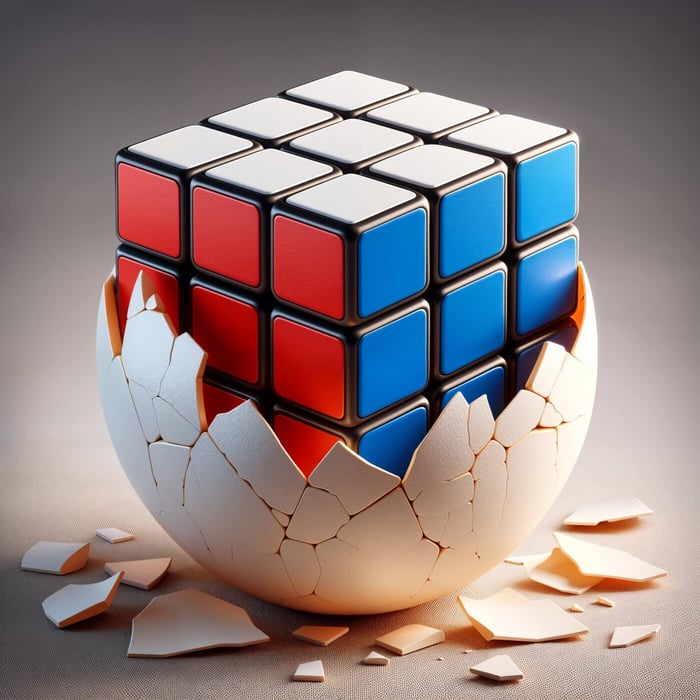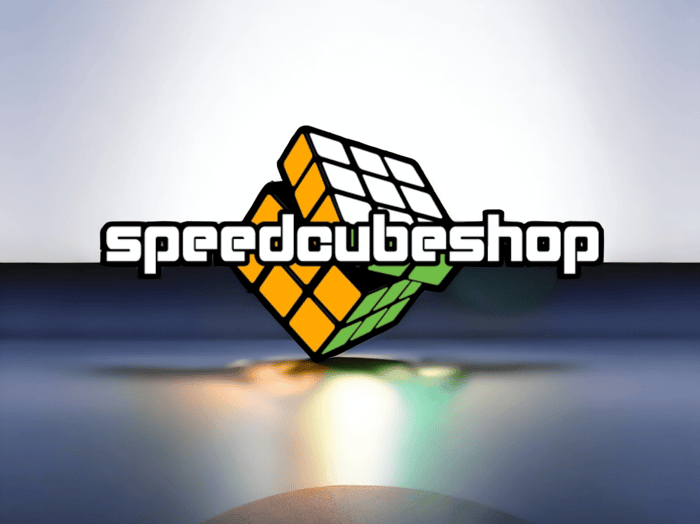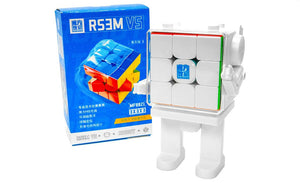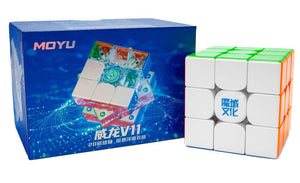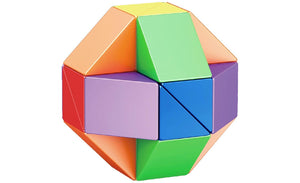Speed cubes, specialized versions of the traditional Rubik's Cube designed for faster and smoother operation, are made through precise engineering, quality materials, and innovative designs. But how are speed cubes made? Here's an overview of the manufacturing process:
1. Design and Engineering:
First, we start at the very foundation, the design and engineering. This is the initial phase where the magic begins, shaping how the speed cube will behave and perform. Here are two very important steps when it comes to design and engineering:
● Innovative Mechanisms: Speed cubes are designed with mechanisms allowing faster turning and reduced friction. These include features like rounded corners, adjustable tension, a spring mechanism, and magnets like the GAN 14 3x3 Magnetic that has the Maglev design. But what is Maglev? In a traditional 3x3 puzzle cube, each centerpiece is typically mounted on a screw with 6 springs. The Maglev design innovates this structure by replacing these 6 springs with a pair of magnets that have opposing polarities.
● Computer-Aided Design (CAD): Designers use CAD software to create detailed models of each part of the cube, ensuring precision and compatibility; for a clearer understanding, consider exploring the Ayi Full-Function (5x5x4) available in transparent blue. This design allows you to see the internal mechanism of the cube, offering a unique insight into the intricate workings.
2. Material Selection:
Now that we understand the design aspect, you might wonder how the materials selected contribute to how a speed cube is made. Well, let us shift our focus to another important aspect in our "How are speed cubes made" blog: the choice of materials.
● Plastic Quality: High-quality plastics are selected for durability and smooth movement. ABS (Acrylonitrile Butadiene Styrene) is commonly used due to its strength and smooth surface.
● Lubrication: Specialized lubricants are often used to reduce friction and enhance the cube's speed, such as our line of Cosmic Lubes, like the Lunar, Martian, or Stardust lube.
3. Molding Process:
Next up in our journey through the creation of a speed cube is the molding process. This stage is where the design and materials selected all come to life.
● Injection Molding: The individual parts of the cube (like the core, edge, and corner pieces) are typically produced using an injection molding process. In this process, molten plastic is injected into molds to form the cube's parts.
● Precision: The molds are designed to be highly precise, ensuring that the parts fit together seamlessly and move smoothly.
4. Assembly:
With each individual component now molded, we advance to the next step in the production of a speed cube: the assembly stage. At this stage, the journey from raw materials to tangible parts all comes together into the careful and precise process of putting the pieces together.
● Manual or Automated: The assembly of speed cubes can be manual or automated. The core, edge, and corner pieces are assembled during this stage.
● Adjustments and Calibration: The tension of the cube is adjusted and may be calibrated for optimal performance.
5. Sticker Application:
As the assembly of the speed cube reaches its completion, we approach a visually defining stage: the sticker application. This stage is not just about adding colors; it's about ensuring longevity and visual clarity for speedcubers.
● Durable Stickers: High-quality, durable stickers are applied to the cube. Some speed cubes use tiles or colored plastic instead of stickers to avoid peeling and wear; we offer both stickerless and stickered cubes!
6. Quality Control:
With the cubes assembled and stickered, one might ask, how do we ensure their quality? This brings us to the next crucial step in our "How are speed cubes made" blog.
● Testing: Finished cubes are tested for quality, ensuring they meet the required standards for speed and smoothness.
● Inspection: Each cube is inspected for defects in materials or assembly.
Be aware that there is a notable difference in quality between entry-level speed cubes like the Moyu RS3M 2020, Qiyi QiMeng V2, and Yuxin Little Magic compared to high-end flagship models such as the Gan 14 Maglev, X-Man Tornado V3, or MoYu Super WeiLong, which offer superior quality.
7. Packaging:
● After passing quality control, the speed cubes are packaged and prepared for distribution.
So, how are speed cubes made? The Answer lies in their unique manufacturing process of speed cubes is a blend of modern manufacturing techniques and precision engineering, resulting in a puzzle that is significantly faster and more efficient than traditional Rubik's Cubes. The focus on the smoothness of movement, durability, and speed optimization is what sets speed cubes apart.



